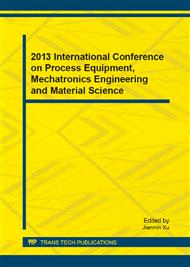p.102
p.106
p.110
p.114
p.118
p.124
p.129
p.133
p.137
A Reformative Simulation Method of Motor Pole Core Vibration Characteristics
Abstract:
As to directing motor design, it is very important to make sure that the motor’s forecast of vibration performance has reference value. So, it must need motor’s parts vibration characteristics simulation results are so close to their characteristics. This paper puts forward a new simulation method of motor pole core vibration characteristics, this method includes setting anisotropy material attributes multipartite, getting attributes parameters values which are based on recommended fitting curves, modeling and equating windings, equating dipping lacquer and so on. Combining with experiments, the new method is validated its availability.
Info:
Periodical:
Pages:
118-123
Citation:
Online since:
July 2013
Authors:
Price:
Сopyright:
© 2013 Trans Tech Publications Ltd. All Rights Reserved
Share:
Citation:


